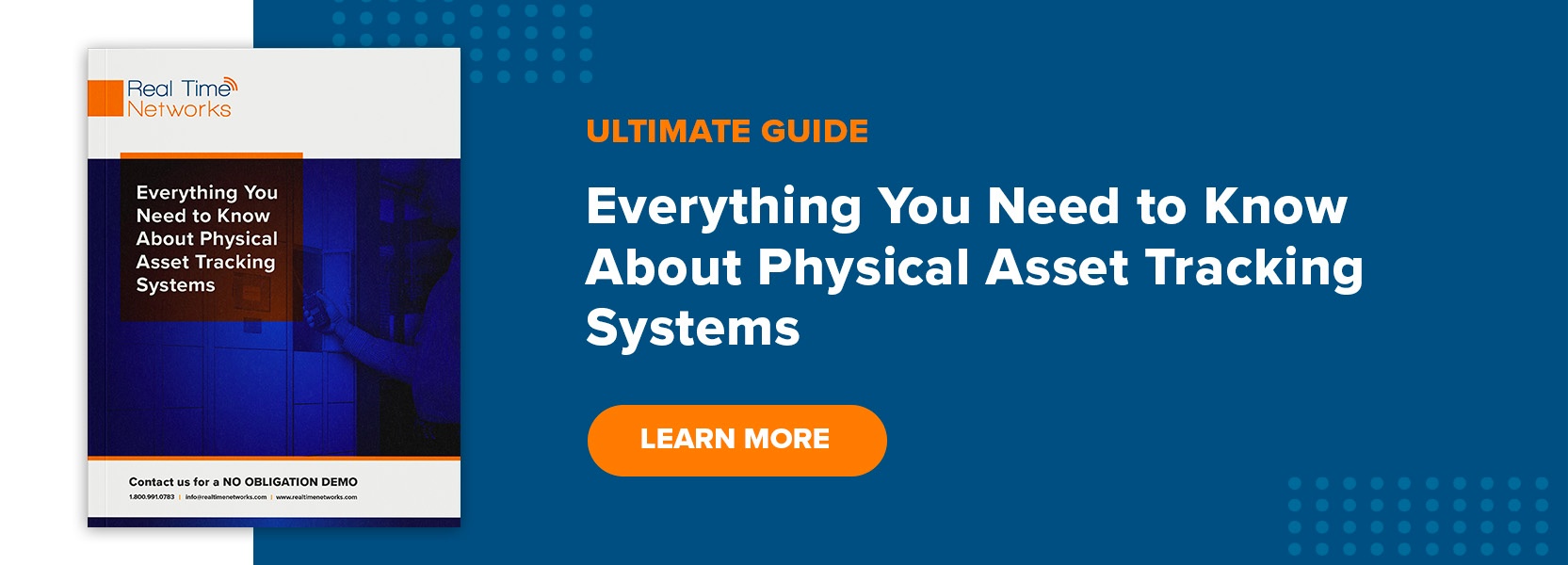By Jay Palter | June 23, 2023
Warehouses and distribution centers are people-powered operations. Workers clamor to receive shipments, organize pallets and bins, and pick orders for delivery. But just because they’re people-powered operations doesn’t mean their equipment is unimportant.
In fact, many warehouse managers are left worrying about just how dependent their teams are on the contents of their warehouse toolkits to get work done. How long can your warehouse sustain operations if too many scanners or other equipment are missing?
Your workers know this too. That’s why we’ve heard from so many center directors whose workers resort to hiding their favorite, known-working scanners and tools because too often they’ve had to do without. Soon, so many tools and whole kits are hidden that managers think they’re lost and must procure replacements ahead of schedule. That’s not only inefficient, but it’s also incredibly costly.
Increasingly, many warehouses are deploying toolkit tracking systems to manage their warehouse toolkits. The good ones don’t try to replace the people-powered workflows shipping operations employ. They just make them more efficient and effective. This article explores how smart lockers improve warehouse toolkit management and share some best practices for enhancing productivity.
Learn More: Warehouse Barcode Scanners: Choosing the Right One for Your Business
What are Smart Equipment Lockers?
Sensor and network technology are what separate smart lockers from traditional lockers. Traditional metal lockers are basic organizational and security tools. Their strength is their simplicity of design.
Much like smart management systems augment the way people work, smart lockers retain the strength and simplicity of traditional lockers and augment them with enhanced tracking and management capabilities. They automate time-consuming work, freeing management time for more meaningful and forward-looking work. For example, instead of spending their entire day managing transactions and auditing returns, equipment managers can spend more time planning future purchasing schedules and aligning equipment budgets to wider business objectives. By handling busy work, they make staff and management more productive.
Regardless of the brand, several core components combine to make a locker system “smart.”
Storage lockers
Lockers are still at the core of any warehouse smart locker system. Their simplicity is effective. Different locker brands offer different configurations. Some include one-size-fits-all compartments. Others offer mix-and-match designs you can customize to fit your specific mix of warehouse toolkits. You can customize either type for specific workflows in your warehouse and maximize your capabilities within your limited footprint.
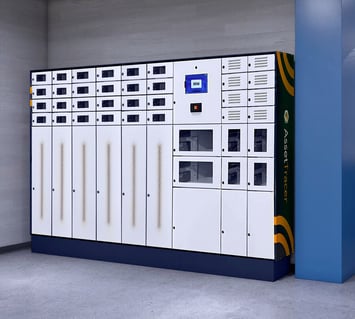
Smart terminals
Smart terminals provide the first layer of intelligence on top of the foundation of equipment lockers. When workers need a toolkit, they sign into the smart terminal, verify their identity, and select the items they want.
Advanced smart terminals can also present workers with checklists they must complete at signout or return. Those can enhance accountability, provide deeper insights into equipment usage, and provide another layer of control over using expensive, vital assets. For example, you can prompt users to verify that handheld scanners or other tools are properly calibrated before they start their shift.
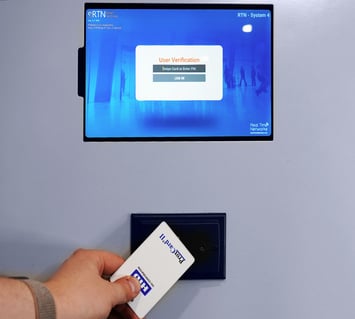
Smart tags
Access control from a smart terminal is useful, but smart warehouse lockers get most of their intelligence from radio frequency identification (RFID) tags attached to toolkits or individual kit components. RFID is a short-range, wireless standard commonly used for machine-to-machine communication. Signals transmit through plastic hard cases, so warehouse equipment lockers can scan all kit components simultaneously to confirm workers are signing in or out everything they need.
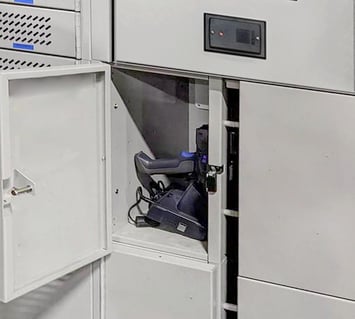
Content surveillance
Content surveillance systems are sensors inside warehouse lockers that monitor equipment while it is stored. These surveillance systems can track RFID tags and wired USB connections for electronic devices. They verify workers return the same devices they signed out of, detect defects, and trigger alerts to managers when there is a problem with a stored asset.
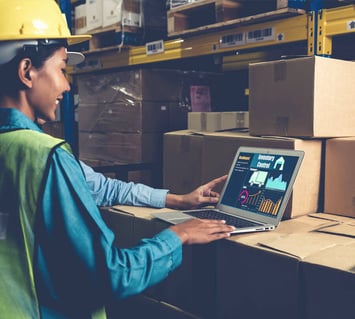
Management Software
The smart terminal, tags, and content surveillance systems all collect data. But to generate meaningful insights, that data needs to be analyzed. That is where the central management dashboard comes in. You can analyze toolkit use, manage worker access, identify problems and other meaningful trends, and generate reports on any metrics you want to measure.

Best Practices for Managing Warehouse Toolkits
Real Time Networks engineers have worked with warehouse teams and distribution centers across North America to help them design more efficient toolkit management programs. The problems each of those organizations face may differ, but some common challenges crop up repeatedly. Those challenges can all be addressed following a few straightforward toolkit management best practices.
Maintain an accurate inventory of all kit components
As a first principle, company toolkit management requires knowing all the equipment your organization owns. You might own a toolkit, but if you don’t have an accurate inventory, you’ll never be able to track or manage it.
If a toolkit or tool kit component’s loss would significantly impact your distribution center operations, you need to track it. If you currently lack an inventory of such assets, before you do anything else, it is crucial to construct one. From scratch, if necessary. This process may take some time, but consider it an investment in future productivity.
Use reliable management technology
Traditional toolkit and equipment management methods—for example, spreadsheets or pen-and-paper—are only effective on a small scale. They’re inadequate for most modern, large-scale warehouses and distribution centers. A certain level of technology is necessary to provide efficient management and tracking. The specific level required will depend on your organization’s unique requirements and circumstances.
When researching security toolkit management systems, prioritize those that offer customizable hardware and software you can adapt to your specific workflows. The hardware components should fit within your available footprint while still accommodating your center's unique assortment of tools and equipment. The management software should provide alerting capabilities, comprehensive reporting, and real-time insights to ensure you’re overseeing all aspects of warehouse operations.
Track everything about your warehouse toolkits
By harnessing the power of smart technology for data collection, you can gain valuable insights into your warehouse's workflows that may otherwise go unnoticed. Digital data collected by your work toolkit management system provides a reliable log of the duration each employee has equipment signed out, records any fault codes generated by handheld devices, and captures other workflow-related issues reported by workers. With all this information integrated into a central management dashboard, there is no risk of overlooking any problem due to human error.
Manage entire workflows, not just materials
Ensuring your toolkits are fully stocked, and all components are in proper working order is undeniably important. However, the true value of using a smart locker system to manage your equipment lies in its ability to manage the workflows in which your workers use those managed tools. Rather than the loss of devices themselves, wasted time and effort account for most of the costs of manual employee toolkit management.
To streamline workflows and gather useful data on how workers carry them out, you can customize checklists that workers can access at smart locker terminals when they check equipment in or out. For instance, you can prompt employees to report when consumable kit components are depleted.
Treat your toolkits like investments in productivity—because they are
All together. The contents of warehouse toolkits carry a significant price tag, but their value extends well beyond mere cost. Consider their role in your center’s workflows. If your scanning tools are not readily accessible when and where workers need them, these critical workflows can grind to a halt.
Consider the consequences of missed delivery dates, jeopardizing multi-million dollar contracts. Those consequences mean much more to your business than the cost of just a few warehouse tools.
It is essential to view having your toolkits available when and where they’re needed as an investment in your organization's productivity. Just like any valuable investment, those assets deserve proper management and attention
Use management system data to inform future purchasing
The data collected from tracking offers valuable insights into your workers’ use of your toolkits. Through the analysis of usage data, you can pinpoint items whose performance exceeded expectations and those susceptible to frequent failures.
These insights support better decision-making and should serve as a guide for your future spending cycles. You will gain a comprehensive understanding of past instances of overspending or underspending on particular products. Moreover, you can determine the ideal quantity of surplus devices to maintain. Instead of losing track of all the tools your workers have frittered away, you’ll have a complete, accurate log.
Learn More:
[Download] Best Practices for Equipment Management in Distribution Centers
Streamlining Toolkit Management Can Be Simple
There are no hidden secrets for managing warehouse toolkits. All it takes is a little knowledge of current best practices and the desire to see them applied in your organization. A little effort goes a long way.
Subscribe to our blog

Jay Palter
Vice President of Marketing & Partnerships
